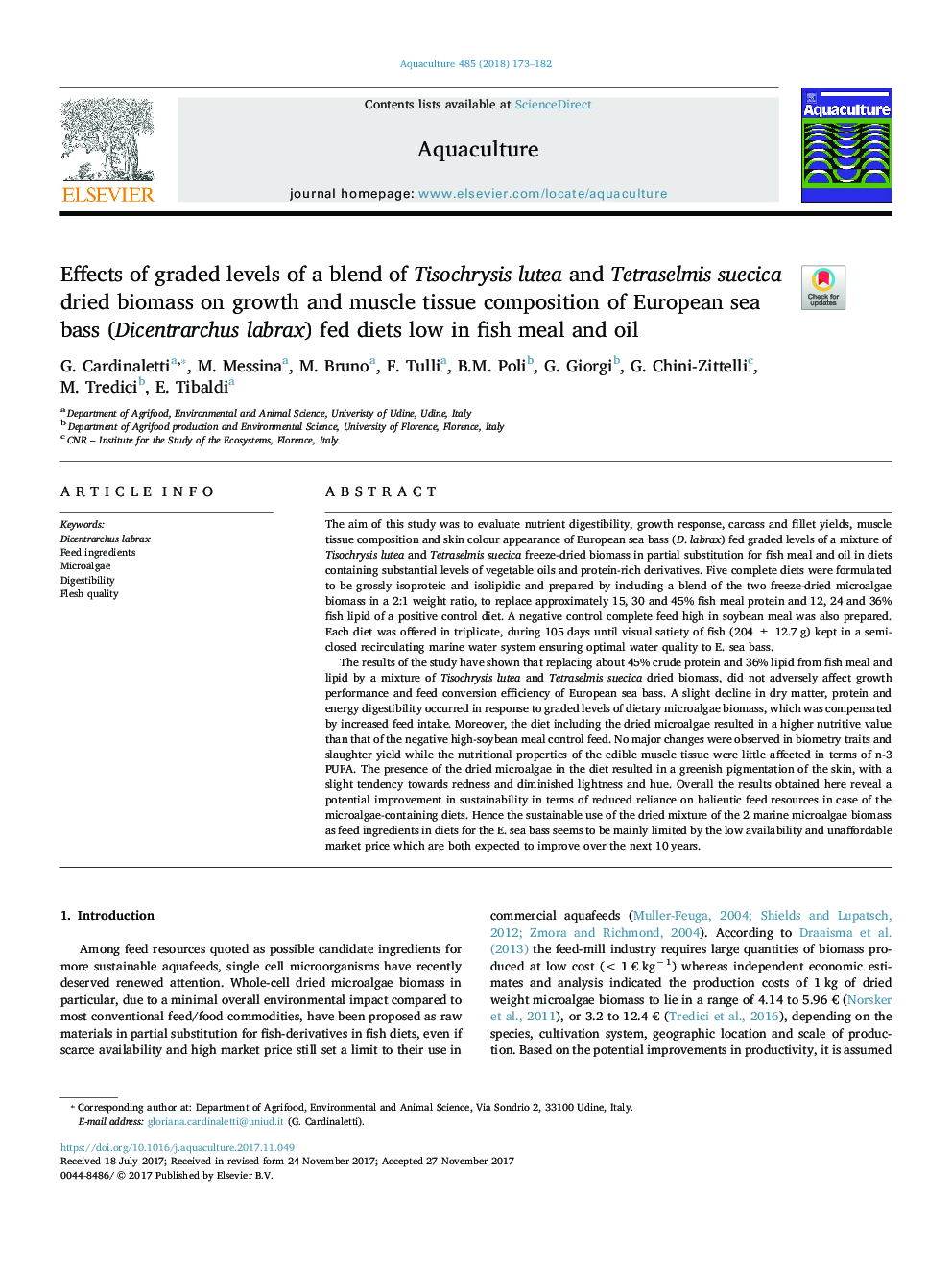| Article ID | Journal | Published Year | Pages | File Type |
|---|---|---|---|---|
| 8493512 | Aquaculture | 2018 | 10 Pages |
Abstract
The results of the study have shown that replacing about 45% crude protein and 36% lipid from fish meal and lipid by a mixture of Tisochrysis lutea and Tetraselmis suecica dried biomass, did not adversely affect growth performance and feed conversion efficiency of European sea bass. A slight decline in dry matter, protein and energy digestibility occurred in response to graded levels of dietary microalgae biomass, which was compensated by increased feed intake. Moreover, the diet including the dried microalgae resulted in a higher nutritive value than that of the negative high-soybean meal control feed. No major changes were observed in biometry traits and slaughter yield while the nutritional properties of the edible muscle tissue were little affected in terms of n-3 PUFA. The presence of the dried microalgae in the diet resulted in a greenish pigmentation of the skin, with a slight tendency towards redness and diminished lightness and hue. Overall the results obtained here reveal a potential improvement in sustainability in terms of reduced reliance on halieutic feed resources in case of the microalgae-containing diets. Hence the sustainable use of the dried mixture of the 2 marine microalgae biomass as feed ingredients in diets for the E. sea bass seems to be mainly limited by the low availability and unaffordable market price which are both expected to improve over the next 10Â years.
Related Topics
Life Sciences
Agricultural and Biological Sciences
Aquatic Science
Authors
G. Cardinaletti, M. Messina, M. Bruno, F. Tulli, B.M. Poli, G. Giorgi, G. Chini-Zittelli, M. Tredici, E. Tibaldi,
